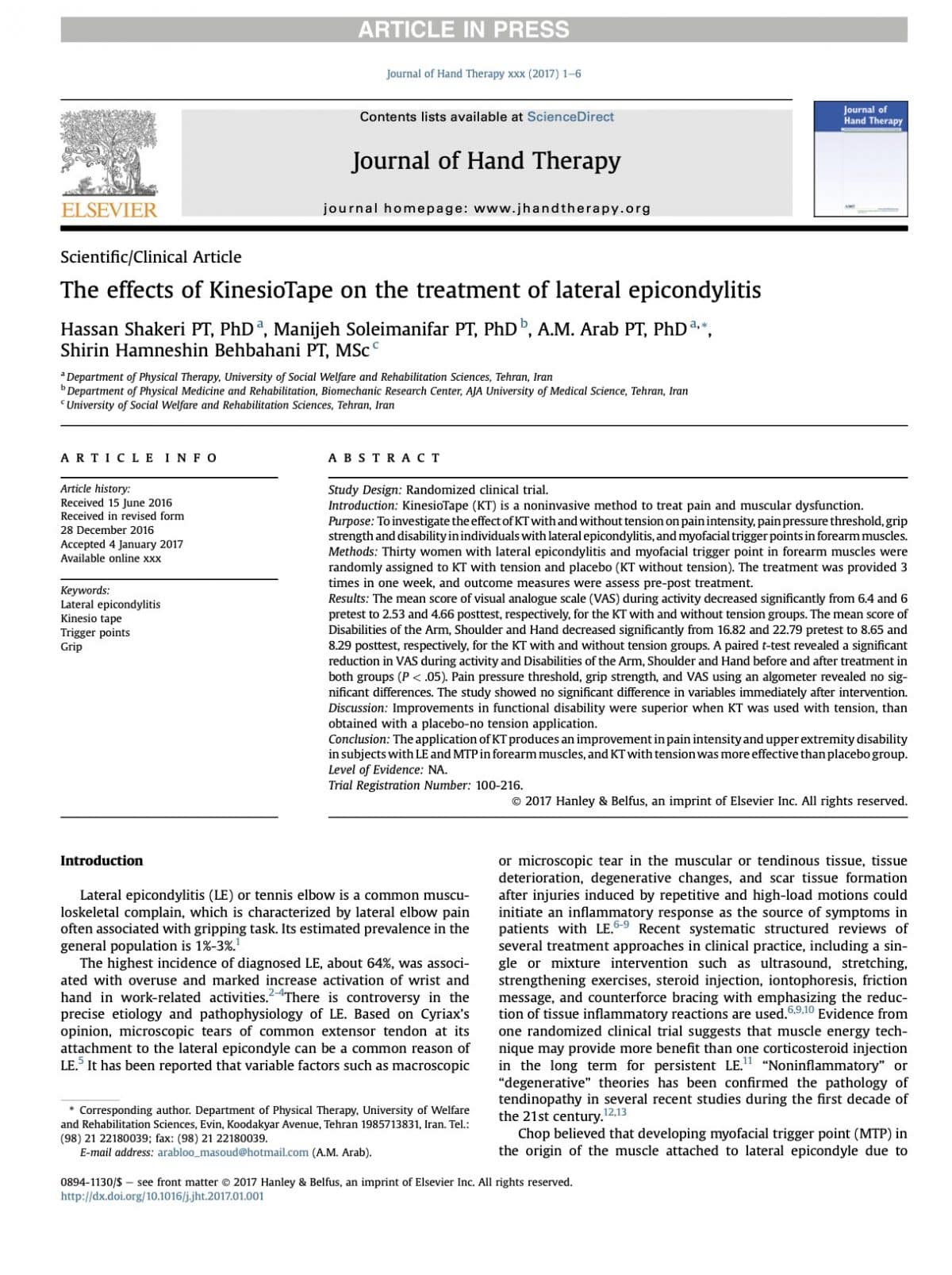ABSTRACT
Study Design: Randomized clinical trial.
Introduction: KinesioTape (KT) is a noninvasive method to treat pain and muscular dysfunction.
Purpose: To investigate the effect of KT with and without tension on pain intensity, pain pressure threshold, grip
strength and disability in individuals with lateral epicondylitis, and myofacial trigger points in fore arm muscles.
Methods: Thirty women with lateral epicondylitis and myofacial trigger point in forearm muscles were randomly assigned to KT with tension and placebo (KT without tension). The treatment was provided 3 times in one week, and outcome measures were assess pre-post treatment.
Results: The mean score of visual analogue scale (VAS) during activity decreased significantly from 6.4 and 6 pretest to 2.53 and 4.66 posttest, respectively, for the KT with and without tension groups. Themean score of Disabilities of the Arm, Shoulder and Hand decreased significantly from 16.82 and 22.79 pretest to 8.65 and 8.29 posttest, respectively, for the KT with and without tension groups. A paired t-test revealed a significant reduction in VAS during activity and Disabilities of the Arm, Shoulder and Hand before and after treatment in both groups (P < .05). Pain pressure threshold, grip strength, and VAS using an algometer revealed no significant differences. The study showed no significant difference in variables immediately after intervention.
epicondylitis
Discussion: Improvements in functional disability were superior when KT was used with tension, than obtained with a placebo-no tension application.
Conclusion: The application of KT produces an improvement in pain intensityand upper extremity disability
in subjects with LE andMTPin forearmmuscles, andKT with tensionwas moreeffective thanplacebo group.
Level of Evidence: NA.
Trial Registration Number: 100-216.
2017 Hanley & Belfus, an imprint of Elsevier Inc. All rights reserved.




